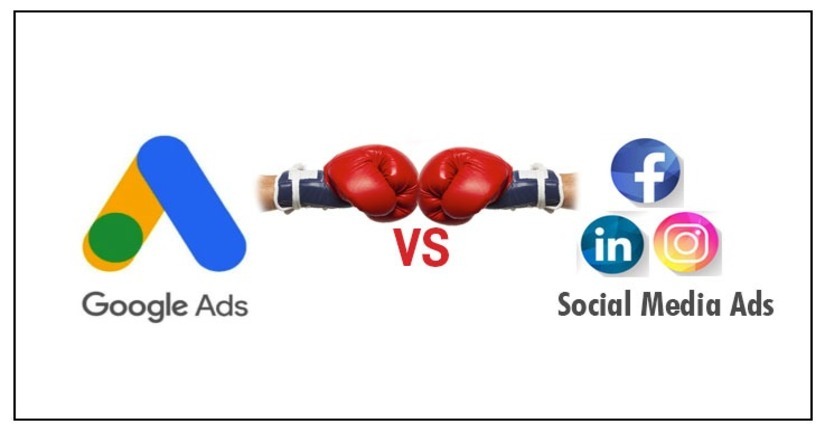Google Ads vs. Social Media Ads: Finding the Best for Your Brand
In today’s competitive digital landscape, choosing the right advertising platform is essential for reaching your target audience and achieving your marketing goals. Google Ads and Social Media Ads are two of the most popular options, but each serves different purposes and offers unique advantages. Understanding the key differences can help you make an informed decision for your brand.
What Are Google Ads?
Google Ads is a pay-per-click (PPC) platform that allows businesses to display ads on Google search results pages, YouTube, and other partner sites. It’s ideal for targeting users actively searching for specific products or services.
Key Features of Google Ads:
- Search Intent: Targets users based on their search queries.
- Wide Reach: Google processes over 8.5 billion searches daily, offering unparalleled visibility.
- Flexible Ad Formats: Options include text ads, display ads, shopping ads, and video ads.
- Advanced Targeting: Use keywords, location, demographics, and device preferences to refine your audience.
Pros of Google Ads:
- High Intent: Attracts users actively looking for your product or service.
- Scalability: Works for both small businesses and large enterprises.
- Measurable Results: Provides detailed analytics for tracking ROI.
Cons of Google Ads:
- Cost: Highly competitive industries can drive up costs per click (CPC).
- Learning Curve: Requires expertise to create and manage effective campaigns.
What Are Social Media Ads?
Social Media Ads are paid advertisements displayed on platforms like Facebook, Instagram, Twitter, LinkedIn, and TikTok. These ads are excellent for building brand awareness, engaging with your audience, and driving traffic to your website.
Key Features of Social Media Ads:
- Visual Appeal: Leverages images, videos, and interactive content.
- Audience Engagement: Facilitates direct interactions with users.
- Demographic Targeting: Allows precise targeting based on age, gender, interests, and behaviors.
- Diverse Platforms: Each platform caters to different demographics and user behaviors.
Pros of Social Media Ads:
- Cost-Effective: Lower CPC compared to Google Ads in many cases.
- Creative Freedom: Use rich media formats to capture attention.
- Audience Insights: Access detailed analytics to understand your audience.
Cons of Social Media Ads:
- Lower Purchase Intent: Users aren’t always looking to buy immediately.
- Ad Fatigue: Frequent ads can lead to audience disengagement.
- Platform Dependency: Success varies based on the chosen platform and audience alignment.
Google Ads vs. Social Media Ads: Key Differences
1. Target Audience
- Google Ads: Ideal for capturing high-intent users who are actively searching for products or services.
- Social Media Ads: Best for targeting specific demographics and building awareness among passive users.
2. Ad Formats
- Google Ads: Focuses on text-based search ads, shopping ads, and display ads.
- Social Media Ads: Offers highly visual and interactive formats like stories, carousels, and video ads.
3. Cost Structure
- Google Ads: Often higher CPC, especially in competitive industries.
- Social Media Ads: Generally lower CPC with flexible budget options.
4. Analytics and Insights
- Google Ads: Provides detailed keyword data and conversion tracking.
- Social Media Ads: Offers insights into audience behavior and engagement.
Which Platform Should You Choose?
The right choice depends on your business goals, budget, and target audience. Here’s a quick guide to help you decide:
Choose Google Ads If:
- Your goal is to capture users with high purchase intent.
- You’re promoting a product or service people actively search for.
- You have a competitive budget to bid on keywords.
Choose Social Media Ads If:
- Your goal is to build brand awareness and engage with a specific audience.
- You’re targeting younger demographics or niche markets.
- You want to leverage visual storytelling and interactive content.
Combining Both Platforms
For many businesses, a combination of Google Ads and Social Media Ads offers the best results. Use Google Ads to capture high-intent users and drive immediate conversions, while using Social Media Ads to nurture relationships, grow your audience, and create brand loyalty.
Conclusion
When deciding between Google Ads vs. Social Media Ads, there’s no one-size-fits-all answer. Both platforms have unique strengths and can complement each other when used strategically. Assess your business goals, audience, and budget to choose the platform that aligns best with your marketing strategy. Remember, the ultimate goal is to maximize ROI and create meaningful connections with your audience.


0 Comment